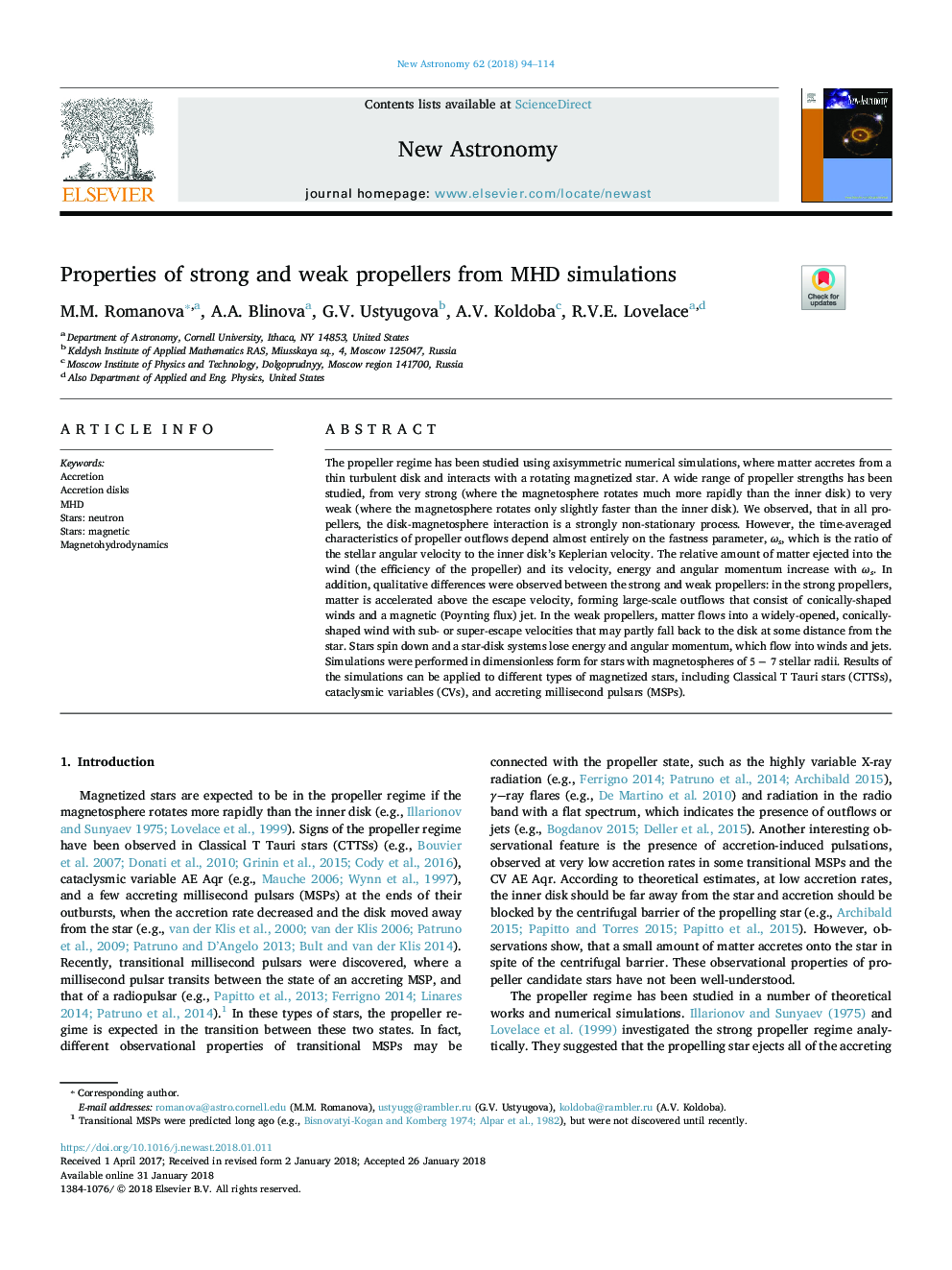| Article ID | Journal | Published Year | Pages | File Type |
|---|---|---|---|---|
| 8141371 | New Astronomy | 2018 | 21 Pages |
Abstract
The propeller regime has been studied using axisymmetric numerical simulations, where matter accretes from a thin turbulent disk and interacts with a rotating magnetized star. A wide range of propeller strengths has been studied, from very strong (where the magnetosphere rotates much more rapidly than the inner disk) to very weak (where the magnetosphere rotates only slightly faster than the inner disk). We observed, that in all propellers, the disk-magnetosphere interaction is a strongly non-stationary process. However, the time-averaged characteristics of propeller outflows depend almost entirely on the fastness parameter, Ïs, which is the ratio of the stellar angular velocity to the inner disk's Keplerian velocity. The relative amount of matter ejected into the wind (the efficiency of the propeller) and its velocity, energy and angular momentum increase with Ïs. In addition, qualitative differences were observed between the strong and weak propellers: in the strong propellers, matter is accelerated above the escape velocity, forming large-scale outflows that consist of conically-shaped winds and a magnetic (Poynting flux) jet. In the weak propellers, matter flows into a widely-opened, conically-shaped wind with sub- or super-escape velocities that may partly fall back to the disk at some distance from the star. Stars spin down and a star-disk systems lose energy and angular momentum, which flow into winds and jets. Simulations were performed in dimensionless form for stars with magnetospheres of 5â7 stellar radii. Results of the simulations can be applied to different types of magnetized stars, including Classical T Tauri stars (CTTSs), cataclysmic variables (CVs), and accreting millisecond pulsars (MSPs).
Related Topics
Physical Sciences and Engineering
Physics and Astronomy
Astronomy and Astrophysics
Authors
M.M. Romanova, A.A. Blinova, G.V. Ustyugova, A.V. Koldoba, R.V.E. Lovelace,
